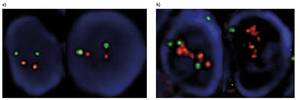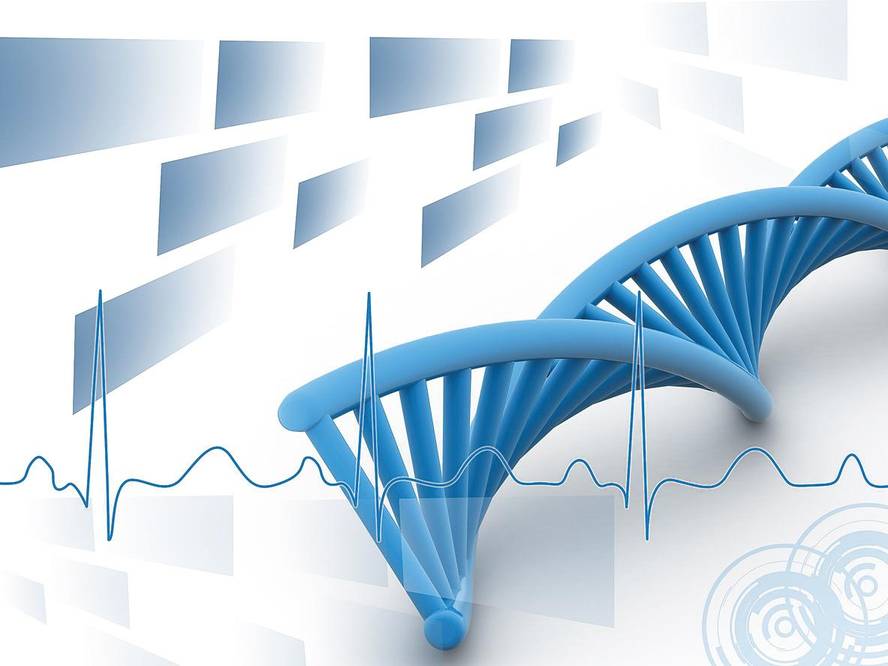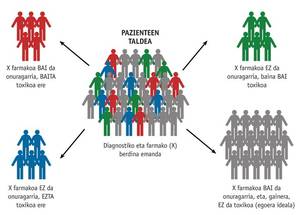Pharmacogenetics, base of personalized medicine
EHUko Genetika, Antropologia Fisikoa eta Animalien Fisiologia Saila; EHUko Genetika, Antropologia Fisikoa eta Animalien Fisiologia Saila; Farmakologia
Medikamenduen Garapen, Balioztatze eta Erabilera Arrazionala masterreko ikaslea; EHUko Farmakologia Saila eta Centro de Investigación Biomédica en Red de Salud Mental, CIBERSAM
EHUko Genetika, Antropologia Fisikoa eta Animalien Fisiologia Saila; EHUko Genetika, Antropologia Fisikoa eta Animalien Fisiologia Saila; Farmakologia
Medikamenduen Garapen, Balioztatze eta Erabilera Arrazionala masterreko ikaslea; EHUko Farmakologia Saila eta Centro de Investigación Biomédica en Red de Salud Mental, CIBERSAM
Askaiturrieta Ostolaza, Ziortza
EHUko Genetika, Antropologia Fisikoa eta Animalien Fisiologia Saila; EHUko Genetika, Antropologia Fisikoa eta Animalien Fisiologia Saila; Farmakologia
Medikamenduen Garapen, Balioztatze eta Erabilera Arrazionala masterreko ikaslea; EHUko Farmakologia Saila eta Centro de Investigación Biomédica en Red de Salud Mental, CIBERSAM
EHUko Genetika, Antropologia Fisikoa eta Animalien Fisiologia Saila; EHUko Genetika, Antropologia Fisikoa eta Animalien Fisiologia Saila; Farmakologia
Medikamenduen Garapen, Balioztatze eta Erabilera Arrazionala masterreko ikaslea; EHUko Farmakologia Saila eta Centro de Investigación Biomédica en Red de Salud Mental, CIBERSAM
Have you ever thought why coffee does not affect all people the same? Some cannot drink coffee from an hour, because they keep it for a long time in the body, and then cannot sleep. We often hear phrases like "an aspirin does nothing to me", "ibuprofen comes me better" or "I have to take an ibuprofen of 600 mg to notice the effect". In addition, it is customary for the doctor to change the drug dose and advise its return the following week. This means that each individual responds differently to drugs and that we need different doses.
Pharmacogenetics Pharmacogenetics
It is known that many drugs are not effective in a part of the population, and this is one of the challenges that is being faced today in medicine. For example, highly used antihypertensive drugs, such as beta-blockers, are partially effective or ineffective in 70% of patients. Administration to patients not affected by these drugs is harmful (due to their side effects) and useless, both in terms of effect and economic. However, there is no evidence to predict who responds after drug administration, so clinicians continue to use proba-error approaches.
The main objective of pharmacogenetics is to optimize individual treatment and achieve an effective and safe personalized therapy, determining the influence of each person's genetics on the drug response. This knowledge can change the way drugs are prescribed in daily clinical practice. Pharmacogenetics allows a preselection of the patients who respond to a treatment and the most appropriate dose of them. That is, it will allow to select the drug appropriate to the appropriate dose for the patient to whom it belongs (Figure 1). In this way you can avoid unnecessary use and side effects of medicines.
Genetics: a source of diversity
As with coffee, in the case of drugs, we classify individuals into three groups: rapid metabolizers, which eliminate substances at high speed; common metabolizers, which expel them at an adequate speed; and slow metabolizers, which eliminate some substances inefficiently. In the latter case, the substances remain longer than necessary in the body. In the case of coffee, this causes the inability to sleep, while in the case of drugs can cause toxic effects. In the human being they are responsible for metabolizing coffee and many drugs. Among these enzymes, CYP2 and CYP3 families are of special importance when metabolizing drugs. These two families of enzymes present small variations from one individual to another. These variations can be due to small variations in gene sequence (SNP, mononuclear polymorphisms) or to duplication or loss of entire genes (CNV, variations in the number of copies). These variations can lead to the formation of different proteins or to the modification of the amount of proteins. As a result, the effectiveness of the metabolism of drugs varies and its effect lasts more or less time. In other words, the individual differences that occur in the activity of cytochrome P450 will be responsible for the efficacy and safety of a drug. This depends in part on the amount of drug present in the blood. Cytochrome P450 in addition to coffee, metabolize drugs used in cancer, psychiatric diseases, etc. Currently there are commercial chips that allow us to know the sequence CYP of each individual and determine the type of metabolizer.
A DNA chip is based on a solid surface (glass, plastic, silicon) with microwells. In each well, through the automatic dispensers, stands the known sequence of DNA. In the case of pharmacogenetic research, these wells establish DNA sequences that can have individuals and affect the response of drugs. For an individual's DNA analysis, a tissue sample (blood or saliva) is sufficient. Once the sample is obtained, the cells are broken and the DNA is extracted from the nucleus. Subsequently, this DNA is marked with fluorescent molecules and is placed in wells. But it will only stick in wells with the same sequence. Then, these wells will emit brightness and, since the sequence corresponding to each well is known, we can also know the individual sequence.
Variability of the response
Besides these genes, there are genes related to the speed of absorption and elimination (pharmacokinetics), as well as the response of a drug to the different parts of the body (pharmacodynamics). Therefore, the different responses to drugs can be caused by four facts. On the one hand, changes in the gene sequences of the metabolizers of the enzymes; on the other, changes in the transporters and receptors of the drugs; and, finally, changes in the proteins that have a certain relationship with the drug response.
Success of pharmacogenetics
An example of the success of personalized therapy is the treatment of Trastuzumab in breast cancer. In 20% of breast cancers currently diagnosed, the HER2 gene (epidermal growth factor receptor 2) is doubled. This means that the receptor of the growth factors that encode the gene is superimposed and increases the number of receptors. Trastuzumab blocks receptors and has shown that it only prolongs its survival in patients with duplicate HER2.
There are different methods to detect patients with increased protein. One of them is fluorescent hybridization in situ (FISH), in which the gene is marked fluorescently. Thus, instead of having two copies of the gene, there can be detected cases in which there are numerous copies (Figure 2). In patients who do not have the duplicate HER2 gene, Trastuzumab has no benefit, but a high cost.

As for safety, 15% of patients are known to have side effects derived from the drug. In patients with colorectal cancer, for example in patients with UGT1A1 gene variant, the drug Irinoteca is poorly metabolized. As a result, the administration of normal doses to these patients will lead to the accumulation of Irinotecan in the body and neutropenia (reduction of neutrophils). Pharmacogenetic studies have allowed to determine the appropriate dose. A DNA analysis allows us to know in a few hours the variation of the gene and to determine the appropriate dose.
As has been seen, pharmacogenetics is fundamental to identify the drug effective for the patient and to determine their dose, thus avoiding side effects. What a few years ago looked like a dream, today is a reality. The U.S. Food and Drug Association (FDA) already recommends the inclusion of pharmacogenetic information on the drug packaging label. Specifically, the FDA website includes a list of 116 drugs in which specific actions of genetic information to take into account are indicated in their containers. (http://www.fda.gov/Drugs/TechnologyResearch/ResearchAreas/Pharmacogenetics/ucm083378.htm).
Our research team works on the pharmacogenetics of childhood cancers and specifically in acute lymphoblastic leukemia (ALL). In this disease, it is a question of locating genetic indicators that influence the toxicity of antineoplastic methotrexate, one of the most important drugs used in the treatment of these children. In fact, this drug is used in high doses, since most children support it well and it has been shown that this harsh form of administration increases their survival. However, for some children, these doses produce very serious toxic effects until they become lethal. Therefore, one of our objectives is to find genetic indicators that allow us to predict side effects.
Bibliography Bibliography Bibliography
Thank you Thank you!
The authors of this study received grants from the Basque Government (IT-199/07, SAIOTEK S-PE10UN14) and the University of the Basque Country (UFI 11/35). Thanks to Maialen Martin Arruti (Pathological Anatomy, Donostia University Hospital).







